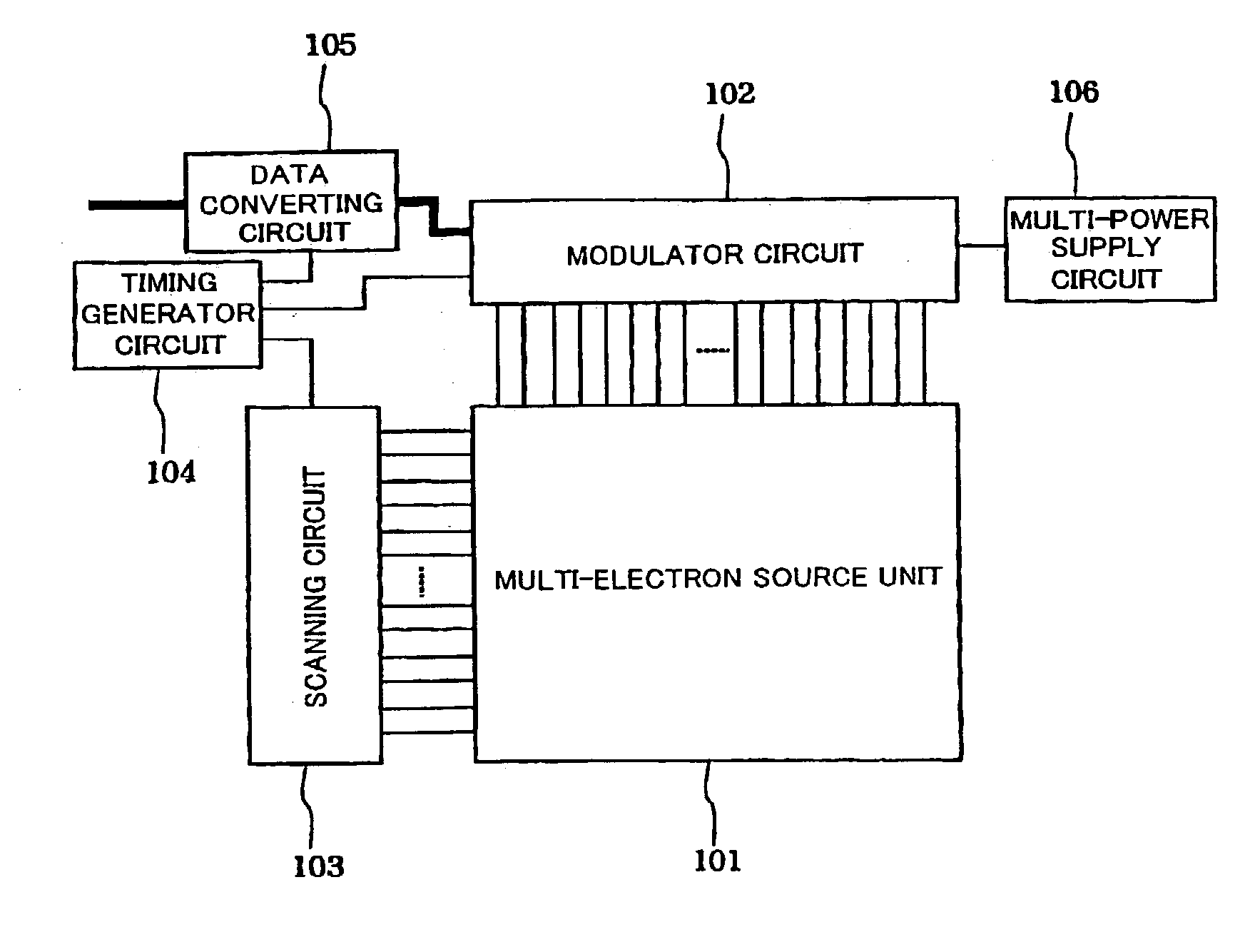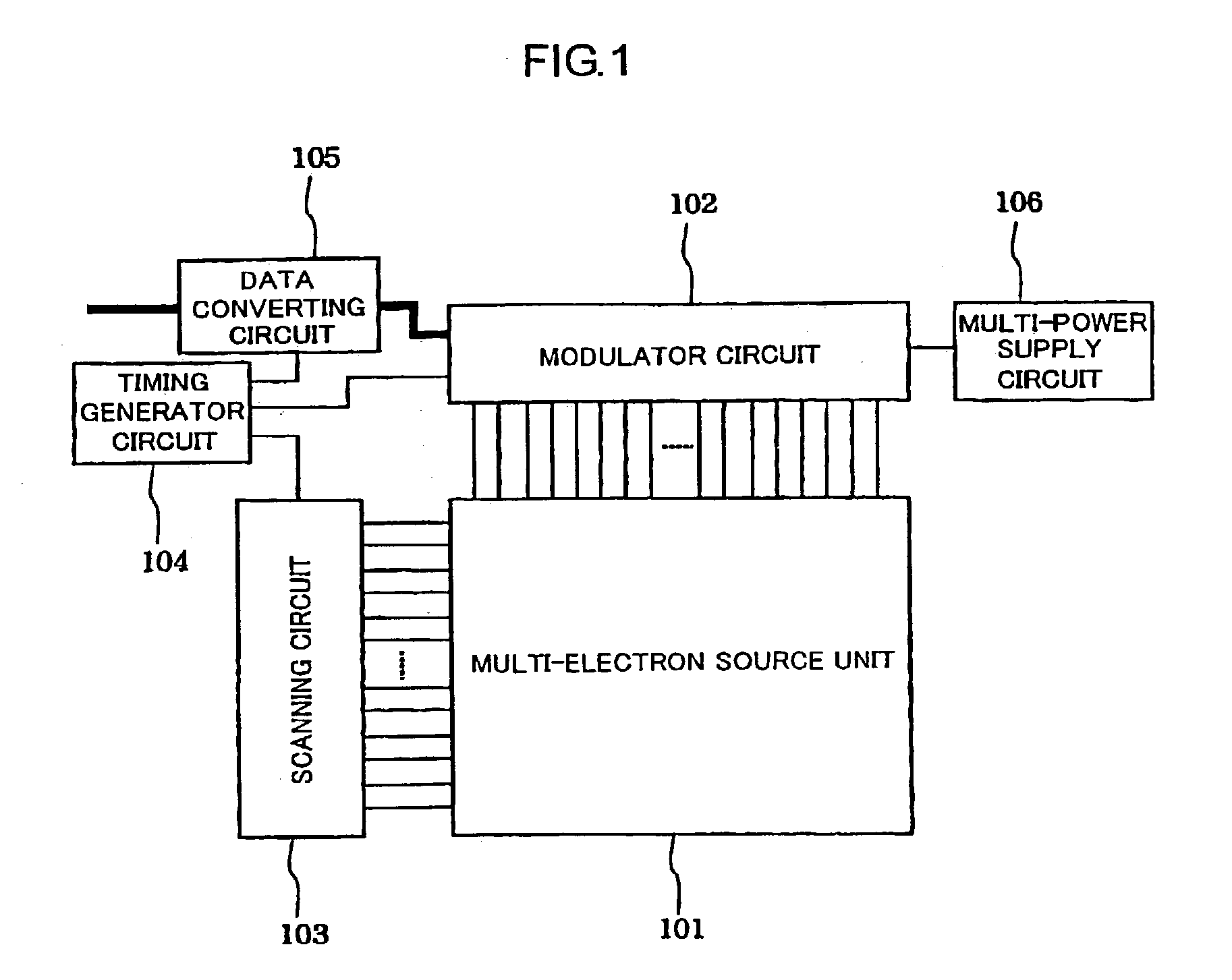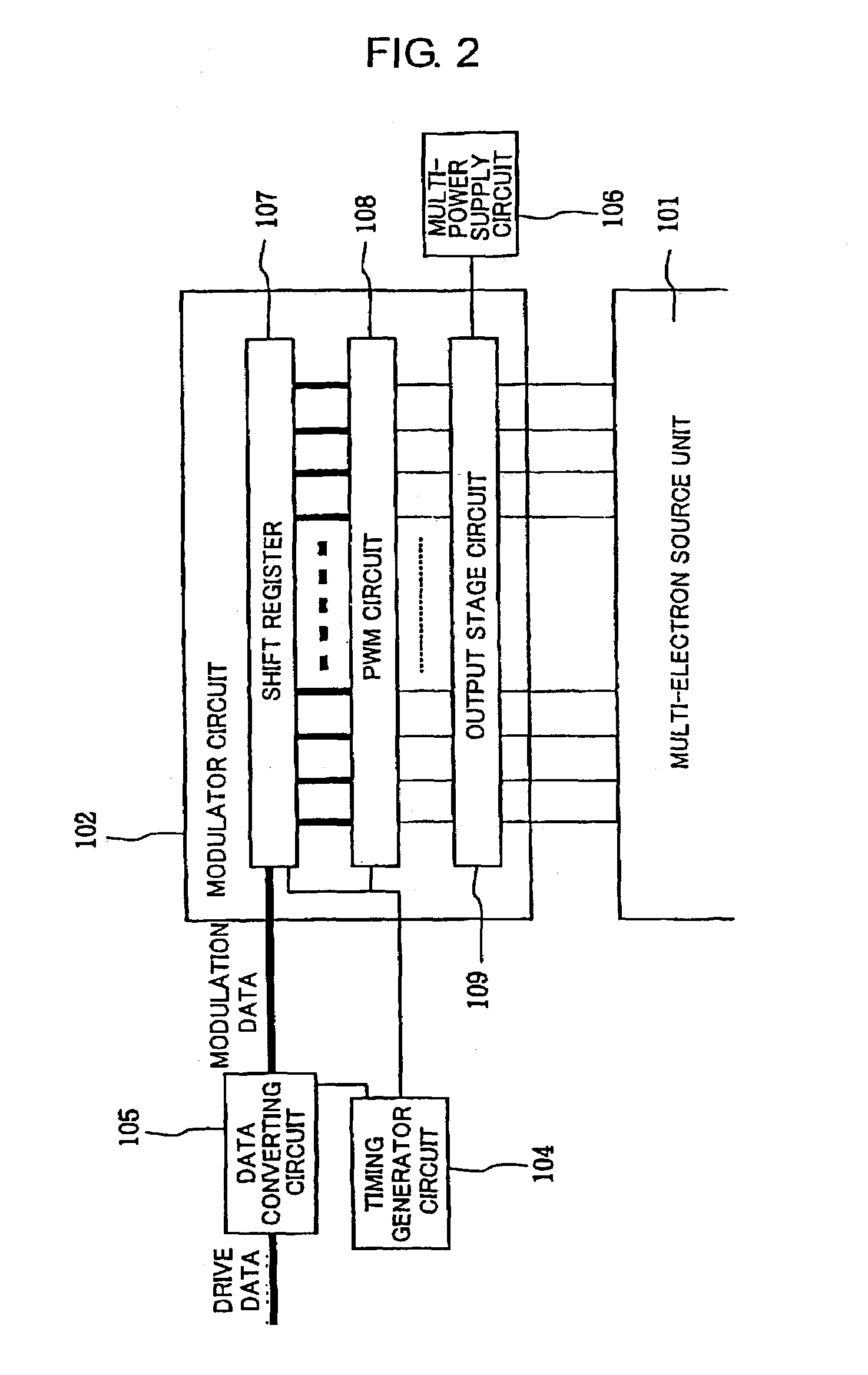Driving device and image display apparatus
- Summary
- Abstract
- Description
- Claims
- Application Information
AI Technical Summary
Benefits of technology
Problems solved by technology
Method used
Image
Examples
first embodiment
(First Embodiment)
[0065]FIG. 1 illustrates, in schematic block diagram form, a driving device in accordance with a first embodiment of the invention. As shown herein, the driving device is arranged to have a modulator circuit (modulation means) 102, a scanning circuit (selection means) 103, a timing generator circuit 104, a data converting circuit 105, and a multiple-power supply circuit 106. This driving device is a circuit for driving a multiple-electron source unit 101, which makes up an image display module of image display apparatus.
[0066]The multi-electron source unit 101 is the one with electron sources (image display elements) 1 being disposed at cross points of row wirings 2 and column wirings 3 as shown in FIG. 28.
[0067]The electron sources may preferably be cold cathode elements. These cold cathode elements are capable of obtaining the intended electron emission at low temperatures when compared to hot cathode elements and, therefore, do not require any extra heaters for ...
second embodiment
(Second Embodiment)
[0125]A second embodiment of the invention will be described with reference to FIGS. 24 to 26 below. Although in the first embodiment stated above is arranged to employ the same dispersion rule to all the column wirings involved, the second embodiment is such that the dispersion rule to be applied to one column wiring is made different from the dispersion rule for its neighboring column wiring. The other arrangement and functional operability of this embodiment are the same as those of the first embodiment so that any detailed explanation thereof will be omitted herein.
[0126]See FIG. 24, which shows drive waveforms in a pulse width modulation (PWM) circuit in accordance with this embodiment. In this example the maximum luminance is set at 16 for purposes of simplification in explanation.
[0127]In this embodiment a plurality of column wirings includes a first group of column wirings (odd-numbered columns) and a second group of column wirings (even-numbered columns)....
PUM
 Login to View More
Login to View More Abstract
Description
Claims
Application Information
 Login to View More
Login to View More - R&D
- Intellectual Property
- Life Sciences
- Materials
- Tech Scout
- Unparalleled Data Quality
- Higher Quality Content
- 60% Fewer Hallucinations
Browse by: Latest US Patents, China's latest patents, Technical Efficacy Thesaurus, Application Domain, Technology Topic, Popular Technical Reports.
© 2025 PatSnap. All rights reserved.Legal|Privacy policy|Modern Slavery Act Transparency Statement|Sitemap|About US| Contact US: help@patsnap.com



